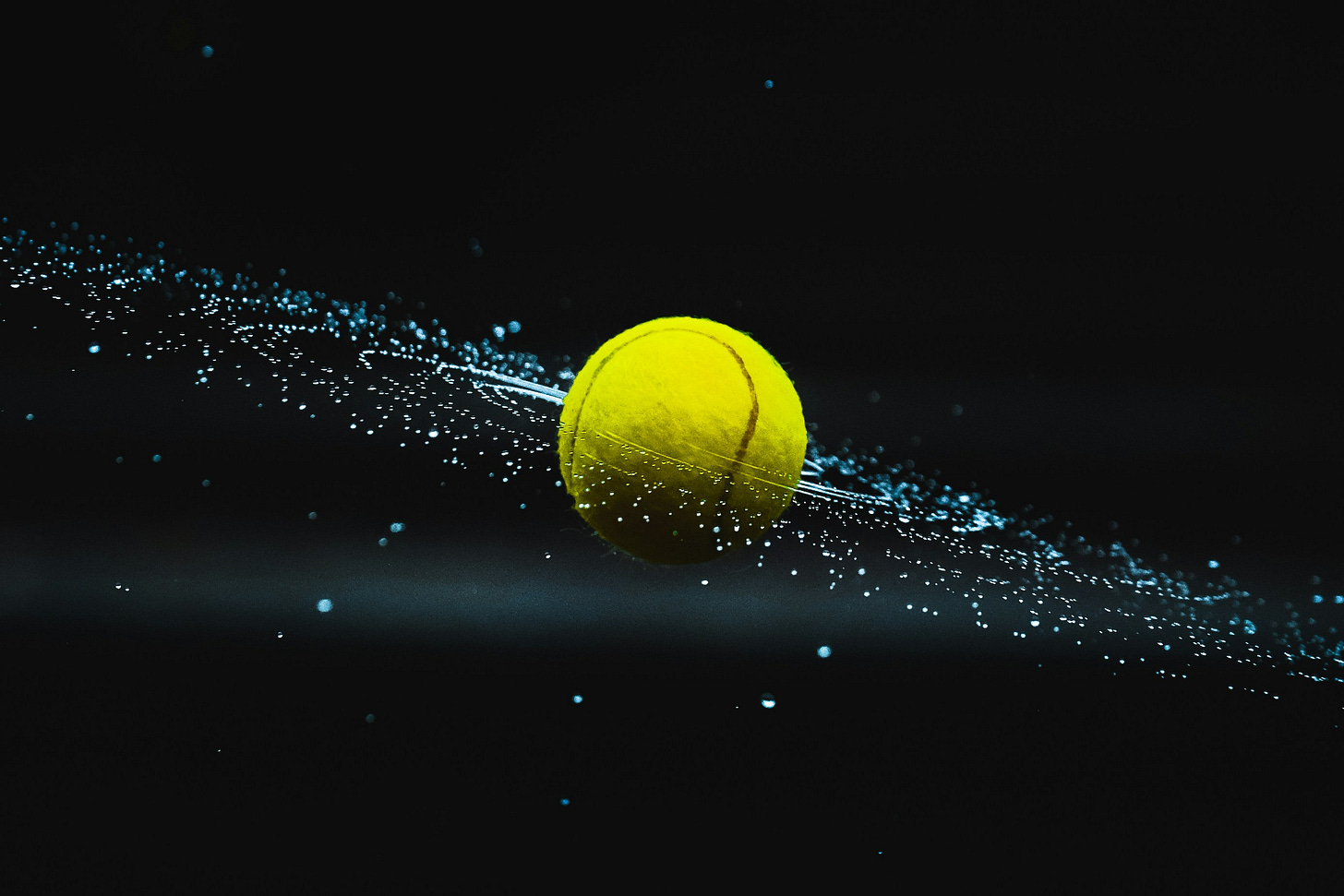You know that question you get in well-intended-yet-often-annoying icebreakers that goes something like “tell us something cool you’ve done in your life”? One of its common flavours is Two Truths and A Lie, which allows Jimmy from Finance to let a little of his wild side out by suggesting he might have once jumped out of an airplane in Australia, or Brianna from Legal to offer a 33% chance that she might be able to tie a cherry stem into a knot using her tongue. You probably have a few of those facts of your own lying around, ready for the next time your manager wants to build some team rapport before a monthly budget meeting.
The one I always have at the ready is that during my teenage years, I was a professional tennis ballboy.
Even though I was paid to stand in the heat and attempt to catch tennis balls hit by full-grown men, when I say “professional tennis ballboy” it’s more accurate to say I was a tennis ballboy for professional tennis players, because I was paid a meagre $10/day to have the honour of nearly suffering heat stroke as the August sun shone down on me, hoping to be in the shade cast by the giant Rolex-sponsored radar clock if only I was in the right position.
It was gruelling, thankless work, which you could only squeeze out of a teenager, but hey. If you could tell a story about being hit in the chest by an ace from Mark Philippoussis – who held the record for fastest serve at the time – how much would you pay for that? If you subtract the $90 I was paid for nine days of work from the normal wage a person would be paid for that, multiplied by the five years I did this work, divided by the number of cool and rare stories I can tell … I might have come away with a bargain. Either way, I was 15, didn’t have rent to pay, and I had the chance of being on TV as I stood motionless, hands tucked behind my back, ready to pounce on an errant ball in the blink of an eye. It was like being famous, but anonymous all at once.
And I didn’t realize that I was in the presence of something it’d take me two decades to figure out. Superfocus.
Tennis is a lonely sport, possibly the loneliest. Doubles doesn’t really count because let’s be honest, nobody watches doubles. Golfers might like to object that their sport is just as lonely but golfers have their caddy. Tennis players just have their racquet, six underpaid teenagers who are meant to be invisible, and a team of line judges and umpires that they can shout at when a call goes a way they don’t like.
I had a rare vantage point of the top athletes in the world, and as a teenager I couldn’t appreciate it because I spent most of my time hungry and distracted, amidst some combination of wondering what I could buy for my meagre $10, and having difficulty keeping track of the exact score during the years when the women’s tournament was in town.
Regardless of my favs and foes going into this special line of work, my allegiances quickly changed once I discovered how players carried themselves on court, and how they interacted with me. The much-adored Australian Pat Rafter wasn’t only distracting because of his sun-kissed smile and long hair, but also was friendly, would joke around with us peasant ballboys, and said thanks when we threw him balls before his serve. He was good in my books. Martina Hingis even lowered herself to talk to me during a changeover as I was holding her umbrella, and we had something like a 2-minute talk where I made her laugh. Hingis fan for life.
Friendliness goes a long way in most areas of life, and I’ll excuse my teenage self for biasing 100% of his opinions of these athletes on how friendly they were. But as I’d discover, I was missing something else.
The king that reigned supreme during that period, with his ancient Wilson Pro Staff racquet and peculiar archer’s setup before his serve, was Pete Sampras. Sampras did not sign autographs walking into Centre Court. Sampras did not have 2-minute conversations with anyone during changeover. Sampras just played, and won, and sweat.
The ballboy gets a strange vantage point on players from being so close, and I can tell you that Pete Sampras sweat profusely. Between every point he would wipe his brow and flick the sweat off his thumb, and I’d see a stream of sweat fly down toward the court. The man probably went through three times as many towels as anyone else did during his matches.
And he also annoyed the hell out of me: not only wouldn’t he say thanks for the balls I threw him; not only because he would only take one ball instead of two (requiring extra work from yours truly when he faulted); but because he wouldn’t even look at me.
One changeover he was walking down to the baseline, wiping his head with a predictably saturated towel. It was soaked, and I know this certainly because of what was about to happen. I ran toward Sampras to take the towel from him, my hand outstretched. Pretty easy target to hit, for a guy that could hit a postage stamp with a 200 km/h serve, but no. He didn’t even look up. Sampras launched the towel in my direction and it missed my hand and hit me in the face, wrapping around me like one of those bear traps dropping from the trees.
(Okay, you astute readers may ask why a professional ballboy such as myself, who claims to have such great reflexes to be able to catch 200 km/h serves, couldn’t catch a much larger object moving far, far slower. Fine. You have me there.)
It was disgusting. Completely soaked in a grown man’s sweat, I don’t care if this guy was the best tennis player in the world. Screw Sampras, I thought, and would curse every ball I tossed him for the rest of the game. Unfortunately my magic had no effect on him. A player at that level has much stronger sorcery, and would not be sidetracked by an amateur magician’s curses. Of course, Sampras still won the match.
For years I would tell people what an asshole Sampras was, and it wasn’t until years later in the delivery room for my daughter’s birth, who required a complicated C-section, that the entire experience suddenly flipped. Under the blindingly bright lights, in the presence of a medical team so superfocused on a performing a task that needs to be performed as close to perfectly as possible, I was in awe. I’m not going to pretend I was thinking about tennis in that moment, I wasn’t. But afterward reflecting on this radiation that the OB/GYN and her team were emanating throughout the procedure, I realized I’d been around superfocus before in my life.
It’s not a common experience, nor should it be. In emergency situations we might touch superfocus a few times in our lives, but it’s an entirely different thing when a person shows up to work each day and can summon it, at will.
And from the operating room to centre court, the entire Sampras saga transformed through the superfocus lens. That day when Sampras threw his sweaty towel at me, I’d been needlessly harsh on him, and wasted my limited curses on his defeat. My delicate ego didn’t like that this guy didn’t have the courtesy to put the towel in my hand like a normal person would, and I was upset with him for it.
The only thing is, Sampras on the court wasn’t a normal person. There’s no definition of “normal” you can use to describe Sampras on the court. He was the absolute apex of athletic performance in a highly competitive, completely lonely pursuit, where the skill gap between him and the 100th-ranked player is essentially nothing.
Sampras didn’t see me there. I didn’t exist to Sampras. Sampras was completely dialled in, there to do what millions of people (and Nike, and Wilson) were paying to watch him do. March out to the edge of what we know humans to be capable of, and deliver missile after missile of perfectly placed serves, charge the net, scoop up impossible volleys, and win. But more than the technical part of the game, stay on the knife edge of superfocus, week after week, month after month, year after year.
Superfocus. Sampras had it, and I encountered it in the form of a sweaty towel to the face.








Absolutely great! So enjoyable reliving those memories. Bravo!